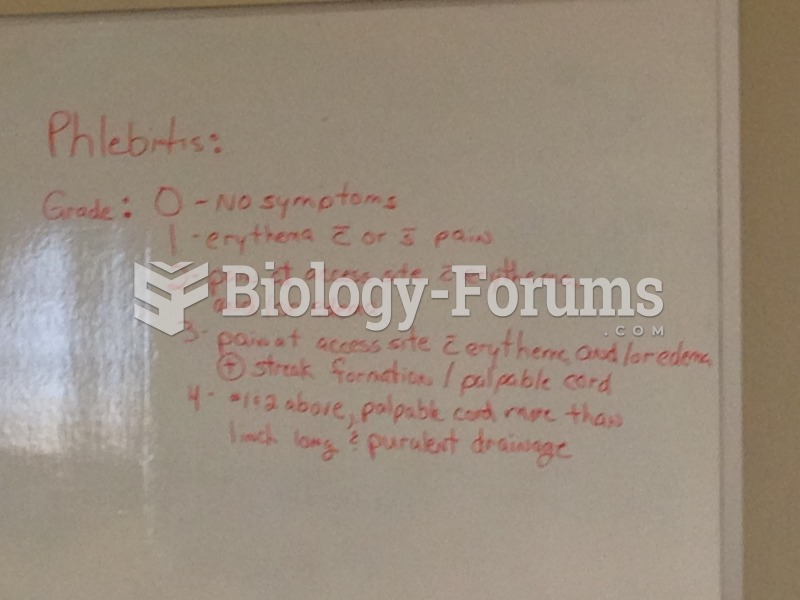|
|
|
Always store hazardous household chemicals in their original containers out of reach of children. These include bleach, paint, strippers and products containing turpentine, garden chemicals, oven cleaners, fondue fuels, nail polish, and nail polish remover.
Thyroid conditions cause a higher risk of fibromyalgia and chronic fatigue syndrome.
The Romans did not use numerals to indicate fractions but instead used words to indicate parts of a whole.
In the United States, an estimated 50 million unnecessary antibiotics are prescribed for viral respiratory infections.
Computer programs are available that crosscheck a new drug's possible trade name with all other trade names currently available. These programs detect dangerous similarities between names and alert the manufacturer of the drug.







